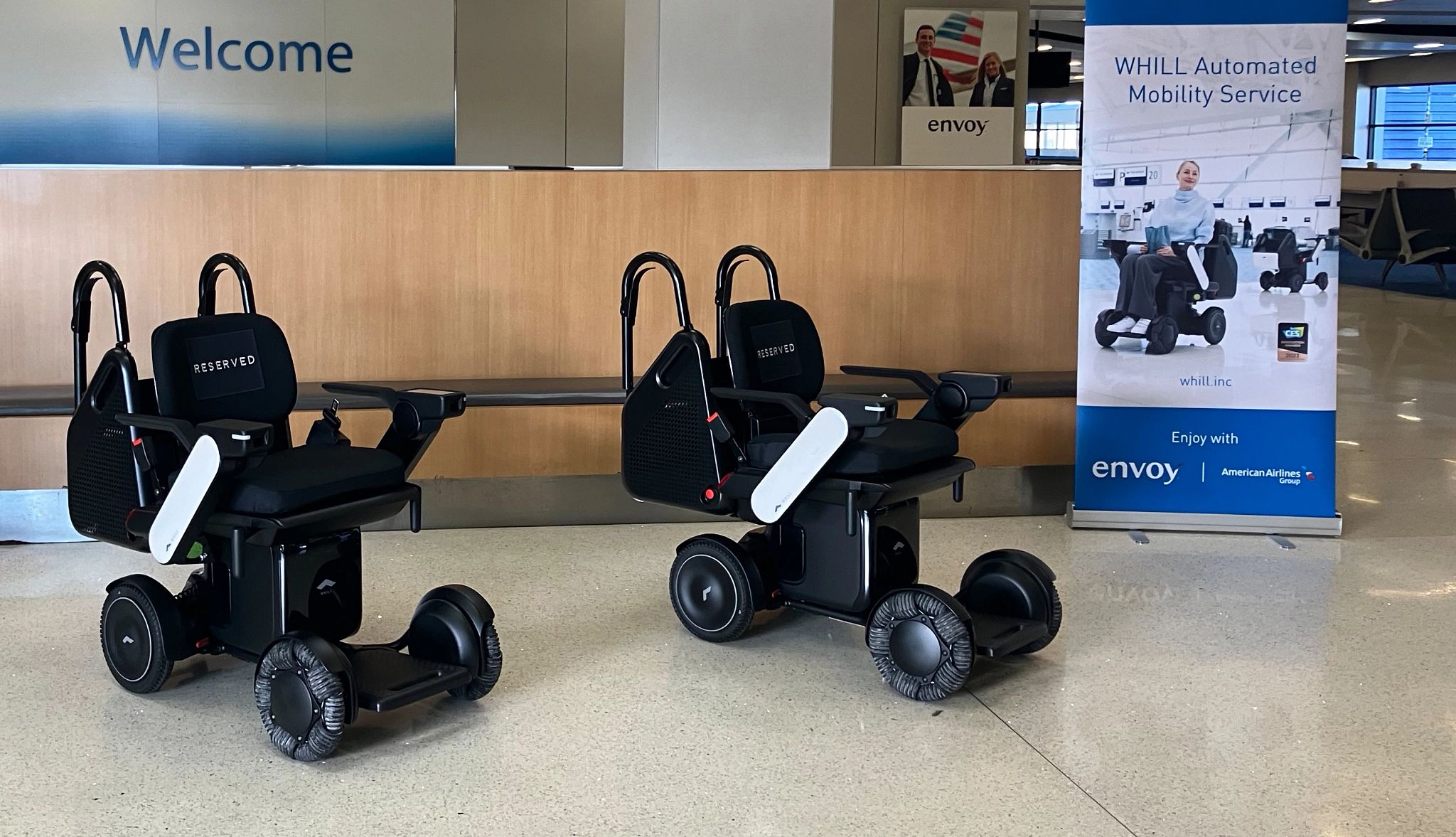AARP Hearing Center
The first time I saw it, I was sure my eyes were deceiving me: An empty, self-propelled wheelchair was making its way through a busy Miami airport terminal, its sensors maneuvering it around kiosks and travelers. It reminded me of my robot vacuum at home, pausing to avoid collision but determined to follow its path, and I was curious enough to follow it. I watched as it made a beeline for a homing station, where other chairs waited for passengers to tap their destinations into the touch screens and be whisked away.
These automated wheelchairs, which recently made their U.S. debut at Miami International and Los Angeles International airports, are providing independence for limited-mobility travelers while alleviating the discomfort of relying on an unknown person to get from point A to point B. They come at a key time as people with mobility issues are the fastest-growing demographic in the airline industry, according to AviationPros.com. A recent study from AARP showed that 14 percent of travelers 50-plus in 2024 expect to require accommodations for disability, with 78 percent of those expecting mobility accommodations. This demand will only grow, as the U.S. Census Bureau projects that the population of Americans age 65 and older will increase 42 percent by 2050.
Now, American Airlines and its subsidiary Envoy Air, which operates American Eagle flights, ground handling and customer service, have partnered with autonomous manufacturer WHILL to provide free robotic wheelchair options for passengers traveling through Miami and Los Angeles International airports. Miami and Los Angeles join Canada’s Winnipeg Richardson International Airport and Japan’s Haneda, Narita International and Kansai International airports in offering a robotic wheelchair option for passengers, says Tres Izzard, president of WHILL Mobility Services North America.
As this option becomes more available across airlines and airports, here’s what you need to know about these mobility aids.


How does it work?
You can ask for an autonomous wheelchair the day you travel, or request wheelchair assistance when booking; just make sure to speak with an agent at the airport so they can guide you, says Adam Simmons, director of communications for Envoy Air. If passengers arrive on an inbound flight, support team representatives will meet them at the jet bridge for arrivals and connections, he says.
Simmons says passengers making connections “may be brought by traditional service to a comfort zone [a waiting area for passengers needing mobility assistance] and then, after a conversation with our team, may use a WHILL autonomous wheelchair to travel to their connecting gate.”
According to WHILL, your carry-on bag can be stowed in the compartment just behind the seat of the wheelchair. Once seated, you’ll use the touchscreen to select your language. Tap on the gate for your departure flight, and you’re on your way.
Each autonomous wheelchair is programmed on a path deemed to be safe and efficient, the company says. Cameras and sensors detect other passengers and obstacles along the way. You’ll hear some beeping as the chair alerts other travelers to your presence and navigates around them, something I noticed as I observed these wheelchairs in Miami. The beeping was much quieter and more discreet than on the traditional airport golf cart. Simmons adds that you’re never entirely on your own: A representative monitors the chairs and passengers as the devices move about the airport.
When you arrive at your gate, you’ll need to tote your carry-on and personal item with you as you walk the jetway to board the plane — these devices can go only as far as the gate. Simmons says once your flight has departed, the autonomous wheelchair is programmed to return to the comfort station or dispatch area, ready for the next passenger.






























































